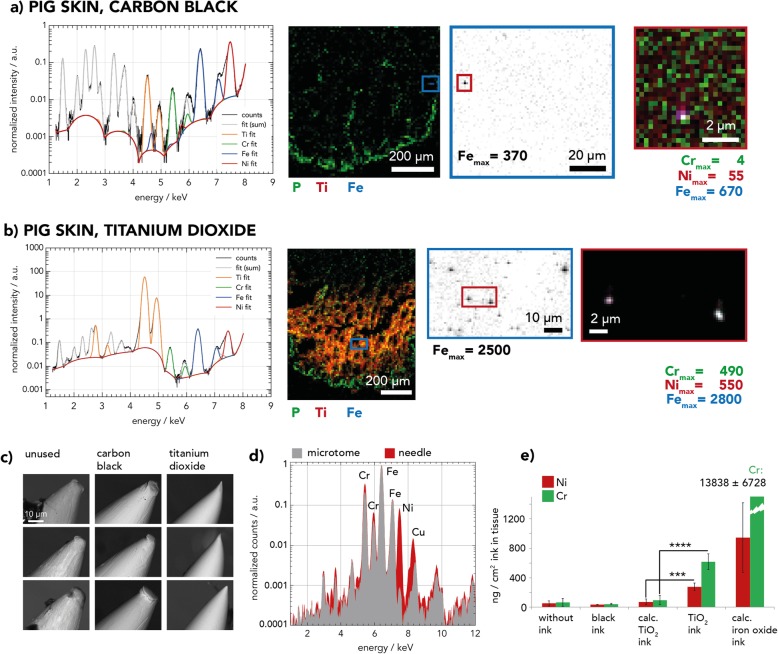Fig. 2.
Nano-X-ray fluorescence (XRF) and scanning electron microscopy (SEM) analyses of pig skin tattooed with carbon black or titanium dioxide (TiO2) inks. a, b Zoom-in nano-XRF maps of tattooed pig skin sections recorded at beamline ID21 show a higher deposition of iron-chromium-nickel (Fe-Cr-Ni) particles with white TiO2 ink (b) than with carbon black (a). Maximal (max.) intensities of elements are given for each element. c SEM images of nine tattoo needles unused and after tattooing of pig skin with carbon black and TiO2 ink. Polished needle surfaces appear only after tattooing with TiO2 ink. d Table-top XRF spectra of tattoo needle and microtome knife. e Quantity of Ni and Cr per weight of tissue in pig skin after tattooing with carbon black, TiO2 or without (w/o) ink, analyzed by inductively coupled plasma mass spectrometry (ICP-MS) and estimated calc. TiO2 ink (see text for explanations). Worst case concentrations of highly contaminated brown iron oxide ink [9] were calculated in the same manner (calc. iron oxide ink). Asterisks indicate significances as identified by a two-way ANOVA with a Tukeys multiple comparison test using all tattooed samples and calc. TiO2 ink. Significant differences of pig skin tattooed with TiO2 ink compared to calc. TiO2 ink are displayed (*** = p < 0.001; **** = p < 0.0001). Data are displayed as mean of three distinct samples ± SD. Abbreviations: P = phosphorus

